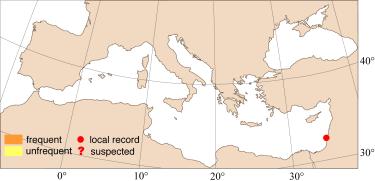
|
Relevant synonyms
Misidentification
Meristic formula
|
|
| drawing : Tuvia Kurz |
|
SHORT
DESCRIPTION
color :
dark brown to green on the back becoming light brown to silvery-grey on belly. Fin tips darker.
size :
common 15 - 30 cm (max. 50 cm). |
DISTINGUISHING CHARACTERISTICS
BIOLOGY / ECOLOGY
habitat :
coastal waters. |
|
1st
MEDITERRANEAN RECORD
|

|
|
DISTRIBUTION
|
ESTABLISHMENT SUCCESS
speculated reasons for success :
|
|
|
MODE OF
INTRODUCTION |
IMPORTANCE TO
HUMANS |
|
KEY
REFERENCES
|
 Arius capellonis
Arius capellonis